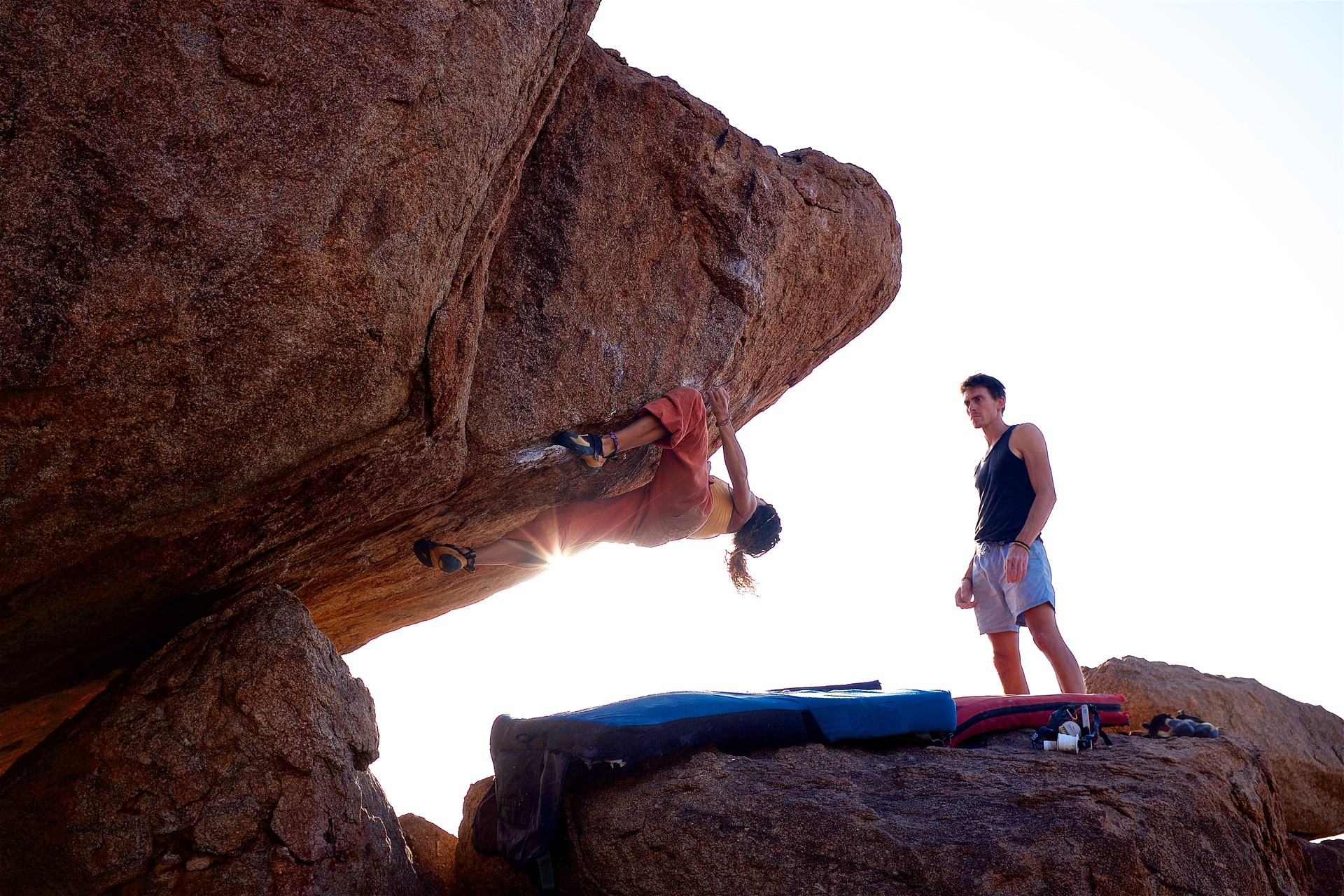
Body + Mind is reader-supported. We may earn an affiliate commission when you buy through some of the links on our site.
Despite being one of the newest forms of climbing, bouldering is already making a big splash in the climbing community. You don’t need to live next to Yosemite or the Swiss Alps — just head to your nearest climbing gym or woods to find the right boulder and get started.
Learn more about this popular and minimalist style and what you need to know to solve your first boulder problem today.
In the strictest sense, bouldering involves climbing while protected by pads on the ground rather than ropes. That means obstacles are typically between 12-15 feet tall, including boulders, small cliffs and indoor climbing walls.
Bouldering emphasizes style and power rather than reaching new heights. Climbers push themselves to the limits on short routes that demand serious strength, technique and mental focus.
Boulder “problems” are specific maneuvers or routes that climbers can tackle. Like other forms of climbing, routes are graded on their difficulty. The most popular scale in the U.S., the Hueco “V” scale, rates boulder problems from V0 to V17. The lower the number, the easier the climb. A higher rating means a more challenging problem.
Now that you understand what bouldering is all about, you can start exploring this gravity-defying sport for yourself.
Bouldering is a unique form of climbing. It doesn’t require ropes and belaying like many other styles. Instead, you’ll focus on specific techniques and complicated maneuvers to get from one place on the boulder or wall to another. The sport emphasizes all three components of physical fitness — cardio, strength and flexibility for a fun full-body workout.
Make sure you read up on the V scale so you know what types of problems you’re getting into. Get familiar enough with the lingo that you can tell the difference between a soft crux — a spot on the route that’s easier than expected and a stiff highball — a tall route that may be harder than advertised.
Bouldering is both an indoor and outdoor sport. If you’re lucky enough to live near a climbing gym, you’re all set — these facilities are often designed for bouldering and have everything you need, even rental equipment available.
If you prefer climbing outside, you can find an outdoor bouldering area to practice your craft. Do research online or reach out to local climbing clubs to get recommendations for the best spots. Get familiar with the area and you’re sure to find a new favorite place to set routes and hang out with fellow climbers.
Many climbers appreciate bouldering for its minimalist approach to climbing — without any ropes in the way, it’s just you and the problem at hand. While it’s true that bouldering doesn’t require a ton of gear, there are a few essential items you’ll need for safety.
A good pair of climbing shoes is a must. While you may be able to rent shoes at your local climbing gym, it’s worth it to invest in a pair you really love if you plan on bouldering regularly. Your own pair of climbing shoes will aid your footwork, especially on the trickiest problems.
Chalk is another necessity. All types of climbers use chalk to absorb moisture and get a better grip on challenging handholds. Just remember to use proper climbing etiquette and clean up your chalk after sending a route.
If you’re climbing outdoors, a crash pad is another must. Falls from any height can cause injuries. Setting padding down and climbing with a friend who serves as a spotter will help minimize any accidents. Indoor climbing gyms will provide pads for you.
Bouldering may look like a solo sport, but the climbing community is close-knit. People rely on others to spot them for safety, offer advice on tough problems, set new challenges and just have fun on the wall.
Whether you’re bouldering in a gym or outdoors, remember that you’re not the only person around. Alert others if you’re attempting a jump or complicated problem. Remember that other climbers are here because they share your passion — take the opportunity to learn from them and make friends!
Now that you’re familiar with bouldering and the basics of this specialized sport, you’re ready to chalk up your hands and get started yourself. Remember to approach every problem with safety in mind as you push your limits and achieve new heights.